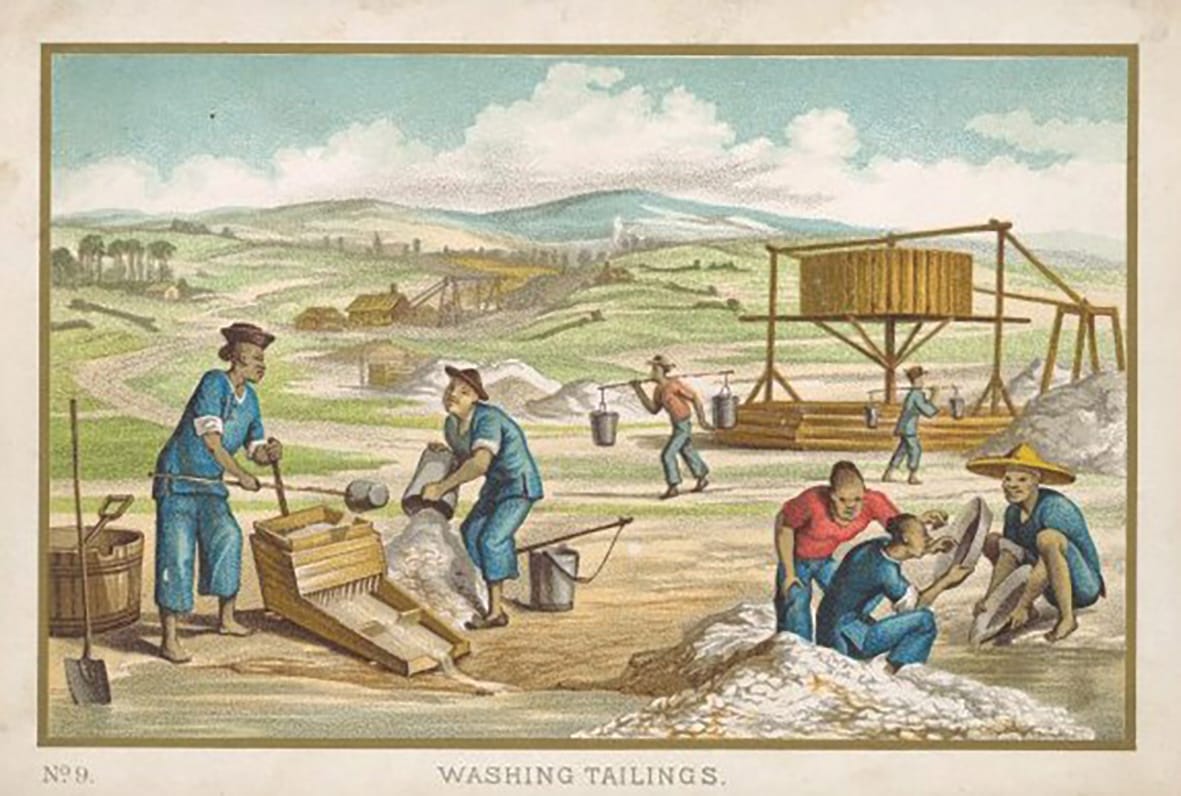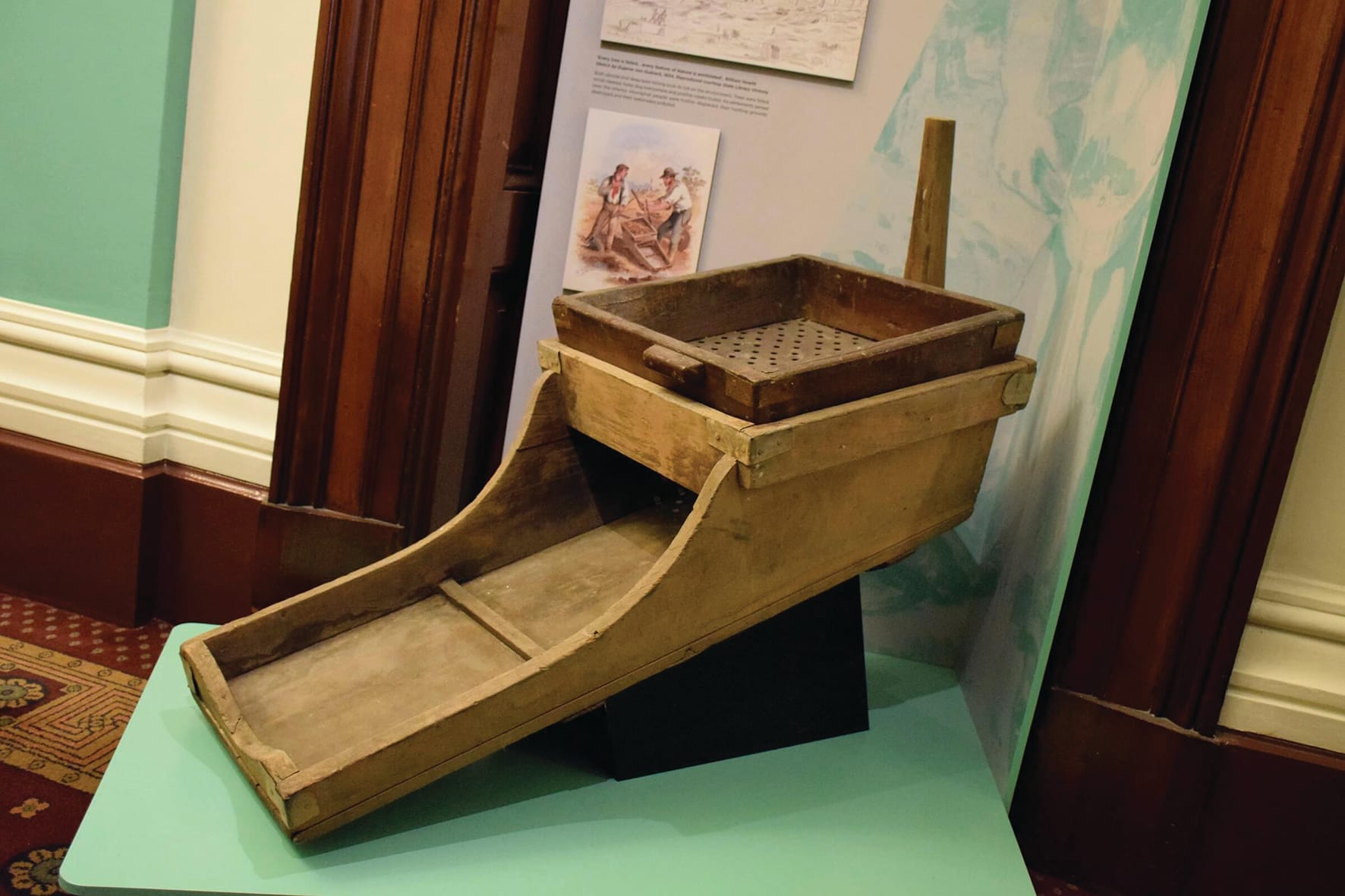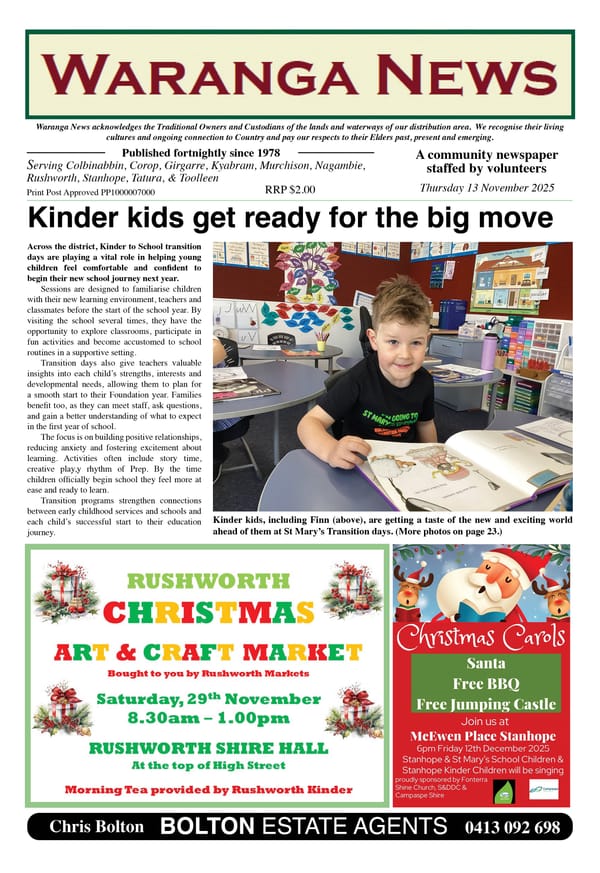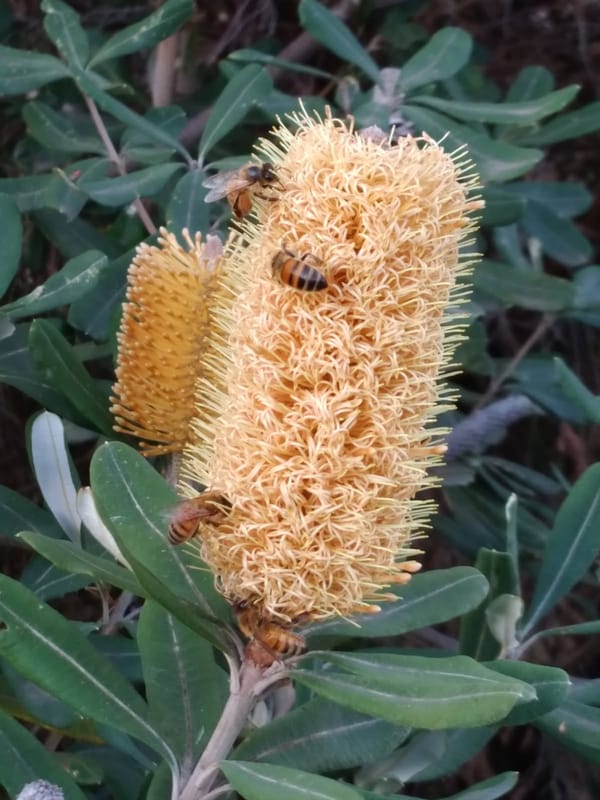10. Rocking the cradle

The Chinese were the pre-eminent alluvial miners on the Waranga goldfields in the 1850s and early 1860s. They tended to stick with alluvial mining well after the majority of miners had either left the industry or were employed by companies involved in quartz mining. In contrast to quartz mining, the alluvial miners could operate with a very small amount of capital. They could also move quickly to new rushes because of their basic equipment.
Most methods of mining for alluvial gold were based on the fact that gold was heavier than the rest of the alluvium. If you could separate the elements that made up the alluvium, the gold would sink to the bottom
The methods used by the Chinese did not vary much over time, although they showed adaptability and were prepared to try new innovations. They were very adept at using the “cradle” which had been invented at the time of the Californian gold rushes in the late 1840s. There would have been hundreds of cradles operating in the Waranga area during the Victorian gold rush era after that technology was brought to Australia.
PUDDLING
Prior to using a cradle, the miners needed to break up the alluvium, particularly when there was clay in the mix. Before the innovation of the puddling machine, the miners would use what was generally called a puddling tub. Quite often this would be in the form of a wooden barrel which had been cut in half. The wash dirt was placed in the tub with water, then agitated to break it up into fine material which could be fed into the cradle.
A way to shift bigger volumes of earth was with a puddling machine, similar to the one which has been reconstructed at Whroo. These machines were an Australian invention of the 1850s. They required a bit more capital investment and also a horse to provide the power. The horse would walk around the top of the puddling machine attached to a wooden pole, which in turn was attached to harrows which broke up the wash dirt.
Wandering through the Rushworth forest, it is easy to find what is left of many old puddling machines in the gullies. Usually, the wooden lining has rotted away, just leaving the familiar round depression in the ground. As the European miners moved on, the Chinese miners often acquired the infrastructure that they had established.
USING THE CRADLE
North-east Victorian researcher Jacqui Durrant describes the use of a cradle, having experimented with one made by a friend. “With a design imported from the Californian gold fields, the cradle was a simple but effective hand-operated device used by diggers to separate gold from washdirt by means of a rocking motion. At the very top of the cradle is a classifier sieve (usually with half-inch or quarter-inch openings) which screens-out larger pieces of rock and other material, allowing only finer sand and gravel through. Between the sieve and the lower section is a baffle with riffles, which acts as a trap for fine gold and also ensures that the aggregate material being processed is evenly distributed before it enters the bottom sluice section. The baffle sits at an angle, pointing down towards the closed back of the box.

The inside bottom of the box is lined with a carpet…which also has riffles. The entire device sits on rockers at a slight gradient, which allows it to be rocked from side to side by its handle. The rocking motion, along with a stream of poured water, washes the earthy matter and the gravel through the sieve, down the baffle and out the end of the cradle. This leaves the gold, mixed with heavy, fine black sand, concentrated either above the first riffle at the bottom of the box, or as we were to find, also caught in the hessian fabric, or washed to the bottom plate of the box itself.”

A variety of cradles – L-R Rushworth Museum; Chinese Museum, Lt Bourke St, Melbourne; Golden Dragon Museum Bendigo
References: Life on Spring Creek blog by Jacqui Durrant 2.10.15 (Note that the Spring Creek in the title of this blog is near Beechworth and not the local Spring Creek we now know as Graytown)




